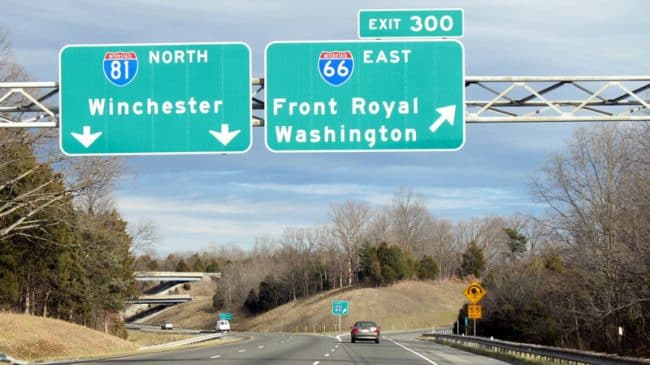On Monday, Dec. 4, single-occupant commuters were able to use I-66 inside the beltway for the first time by paying a variable toll. But the peak of the peak toll prices of $34.50 on Dec. 4, and $40.00 on Dec. 5, were an unwelcome surprise to many commuters in the Washington, DC-area.
The first few weeks of any new variably-priced toll lane are a learning experience as commuters decide how much they are willing to pay to get into the faster moving toll lane. On Dec. 4, morning tolls reached $34.50 and on Dec. 5 such tolls reached $40.00.
While the tolls are expensive, traffic is flowing on I-66 as intended. The lanes provide all drivers the option of commuting in free-flowing traffic that is supposed to always be moving at 45 miles per hour, or faster, from the Virginia suburbs into Washington, DC.
One can make the case that I-66 operates far more effectively today than before tolling started. Now I-66 offers a congestion-free travel alternative. Before tolling, I-66 would get heavily congested during rush hour, especially westbound before Westmoreland St and eastbound between Fairfax Dr. and Washington Blvd. Now, I-66 is open to all automotive traffic, before it was only open to carpools and buses.
A $40.00 toll is certainly high, but it is not unprecedented in the DC region. The I-495 express toll lanes have reached similar prices during the evening commutes between Tysons Corner and Alexandria.
However, nobody likes paying tolls. And some commuters are venting. One Washington Post reader argued that these tolls will introduce a real hardship for people on low wages. Others argued that it was price gouging. Local politicians expressed their own outrage. Virginia State Delegate Timothy Hugo (R-Fairfax County) called the tolls unfair. Loudoun County Supervisor Ron Meyer introduced a resolution calling for immediate changes to the tolling.
While frustration over the tolls is understandable, lowering them or capping them will make the situation worse. The reason the tolls are high is because there is a large demand to use the lanes. Roadways can only handle a certain volume of cars before they become congested. If the tolls decrease, more people will use the lanes causing them to be overcrowded and causing speeds to slow.
Much of the unhappiness stems from a misunderstanding of the goals of the I-66 project. The purpose of allowing toll-paying vehicles on I-66 was not to encourage every Virginia resident to use the road. It was to give commuters the option and ability to get somewhere in a hurry.
Express toll lanes are not designed to be used by commuters everyday. The average user may choose to use them one or two days a week. Commuters can choose to form a carpool and use the lanes for free or switch their travel times to outside of rush hour and use the lanes for free. Commuters could also use the augmented bus service in the corridor, which now operates more reliably.
And the lanes are far from a tool that is only for the wealthy. In preference surveys done on toll lanes, working class commuters have been shown to value toll lanes the most. These commuters might have a job in which they must clock in on time. Or they might have to pick their child up from daycare and face a late penalty that is greater than the tolls. In fact, the five most popular vehicles in most express lanes are the Toyota Camry, Toyota Corolla, Honda Accord, Honda Civic and Ford F-150. None of those models are considered the stereotypical car choices of the rich.
It is far too early to panic or make any changes to the toll price. Commuters need time to adjust their travel patterns. The Virginia Department of Transportation needs time to fine-tune its toll pricing algorithm. And everybody needs time to adjust to changes in the Northern Virginia roadway network.

